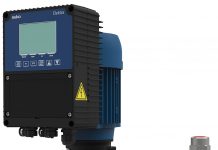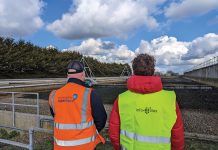By Ralph Exton, VP and CMO at Grundfos Water Utilities
The UK has one of the longest combined networks globally, with 571,800km of wastewater pipes in operation, 26 million homes served and 4,000 tonnes of sewage treated daily. It has also faced substantial media and public scrutiny for high levels of combined sewer overflow pollution in recent years. Despite these challenges, the industry has made some headway in tackling some of the issues it’s facing, but there is no doubt that the future-proofing of the network will require bold thinking, innovation and cross-industry collaboration to ensure success.
At Grundfos it’s our belief that utilities have little choice but to invest in the ‘gold standard’ in sewer security to help us approach the zero-spill future we aspire to. The public will accept no less. This gold standard requires resilient, dynamic and intelligent sewer systems, capable of predicting and preventing blockages and overflows in all weather conditions; collaboration and investment in innovative technologies and proactive maintenance; and embracing technology solutions and adaptive strategies that enhance security and sustainability.
In this piece we’ll consider in a little more detail how digital technologies can help the industry get ahead of its challenges to predict, prevent, manage and mitigate spillages, and move closer to zero-spill.
Sensors and data analytics
Sensors and data analytics are some of the most powerful tools the industry has available, particularly when it comes to predicting and preventing spills.
In recent years sensor technology has advanced to the point that it can now be quickly and easily installed at various points across the network, such as in upstream manholes or in manholes outside a utility lift station, and use LIDAR technology to instantly begin reporting on water levels. For example, before a water or sewage overflow from a manhole occurs, sensors are capable of detecting a rise in water levels, perhaps due to equipment failures or blockages in the wastewater collection and storm sewer line.
These sensors provide an abundance of data, but data is only useful if it can be analysed and understood. When data is integrated with an analytics platform, companies are provided with access to the kind of real-time information that can affect significant change, for example creating an early-warning system for leaks and allowing issues to be identified before they have a chance to cause significant damage. The Grundfos and Metasphere solution provides an intelligent and integrated solution using a combination of LIDAR sensors and a customisable dashboard that provides unparalleled insight into the overarching system and each individual site.
Satellite imagery
Satellite imagery is another area where utility companies can harness the benefits of digital technologies to predict and prevent spillages. This sort of imagery can be used to monitor the condition of infrastructure, such as pipelines, treatment plants and pumping stations, and highlight any issues before they arise. Likewise, satellite imagery combined with geographic information system data can help identify the low-lying areas that might be particularly prone to sewage spills, or that historic data suggests are high-risk. In the UK, water companies are already making use of satellite imagery as part of their digital toolkit, but it’s an area we see as ripe for growth and one that will be particularly effective as part of an overall strategy of prediction and prevention.
Digital Twins
Digital twins, the virtual replicas of physical objects, processes, or systems, have grown in popularity across industries in recent years, and with good reason. For water companies in particular their ability to enhance monitoring, analysis and predictive maintenance can be game-changing when it comes to maintaining the integrity of the wastewater network. In essence, digital twins enable real-time monitoring that provides insight into the current state and performance of the physical asset, which may be pipework or a treatment plant, and the data that can help predict when equipment is likely to fail. This predictive maintenance is crucial in minimising expected downtime, and in preventing issues from happening in the first place.
The call for collaboration
We recently chaired an industry panel which brought together global wastewater experts, and one of the areas they all agreed on was the need for collaboration across industry and with regulatory parties if we are to get near to the gold standard in global sewer security. We need resilient, dynamic and intelligent sewer networks that can not only predict where blockages will occur, but also seek to prevent overflows from happening. Alongside this, we need responsive systems in place to mitigate and manage any spillages as we move along the journey to zero-spill. However, this can only be achieved with true collaboration across the industry; with governments, regulators and special-interest bodies. The road to zero-spill will not be an easy one, but it will be made far smoother when we all remain focussed on our common goal.








